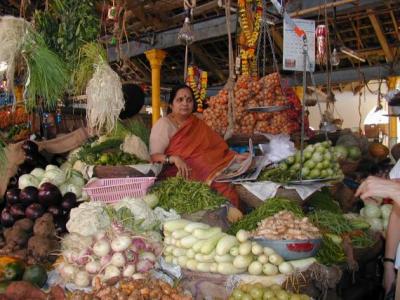
Why is proper food combination important?
By carefully combining foods in an appropriate and healthy way, one can improve assimilation and digestion of healthy substances which are then carried by the blood to the body’s cells. In fact, proper food combination prevents the occurrence of such phenomena as fermentation and putrefaction in the digestive system due to proper transit time; this promotes digestion of food and absorption of nutrients because it is important to understand the different phases of digestion in the gastro-intestinal tract and the diversity of transformation and elaboration of the different substances absorbed from the food.
How to follow proper food combination:
Digestion of Carbohydrates.
Digestion of starch begins in the mouth by means of the enzyme ptyalin whose action continues in the esophagus and stomach. In the duodenum the transformation into simple sugars occurs thanks to pancreatic amylase and maltase. And lastly, in the large intestine cellulose is transformed into glucose through the action of bacterial flora. Simple sugars (disaccharides such as sucrose, maltose and lactose) do not undergo any processing before the small intestine. Instead they are broken down in the duodenum by intestinal enzymes called sucrase for direct absorption. Foods which are incompatible with the digestion of carbohydrates lead to fermentation and to the transformation into carbon monoxide, oxalic acid, acetic acid, alcohol, etc. which then leads to the production of stomach acid, stomach rumbling, flatulence, constipation and diarrhea.
Incompatible associations:
a) STARCH- ACID (eg. bread + orange)
b) STARCH- PROTEIN, especially if lean protein (eg. pasta + sauce, cereal + yogurt)
c) STARCH- SUGAR (eg. bread + honey, bread + dates or figs, bread + jam)
d) STARCH- MILK.
Semi-compatible associations: STARCH- HIGH FAT PROTEIN (eg. bread + eggs, pasta + high fat cheese), in fact gastric acid secretion is slowed down therefore the digestive enzyme activity of starch.
is not totally prevented.
Unrecommended Association: STARCH- STARCH (eg. bread and pasta)
Compatible Association: STARCH- FAT (potatoes + oil, bread + butter)
Recommended Association: STARCH- VEGETABLES
Digestion of proteins begins in the stomach with the action of rennet on milk and pepsin on all proteins. The protein then undergoes the further enzymatic breakdown in the small intestine thanks to the enzymes trypsin, trypsin-chyme and finally pancreatic and intestinal peptidases. Incompatible combinations lead to protein putrefaction, or formation of gas putrid and toxins (hydrogen sulfite, phenyl-propionic acid, indol, skatole, alcohol, acetic acid, ptomaine, leucomaine), bad smelling, liquid or hard feces.
Incompatible associations are:
a) LEAN PROTEIN- STARCH (eg. yogurt, white cheese + cereals, bread)
b) HIGH FAT PROTEIN- HIGH ACID (eg. Orange + nuts)
c) HIGH FAT- SUGAR
Semi-compatible associations are:
a) PROTEIN FAT-STARCH (eg. meat, high fat cheese + pasta, bread)
b) LEAN PROTEIN- LOW ACID (yogurt + apple)
c) PROTEIN- FAT
d) LEAN PROTEIN-SUGAR
Unrecommended association: PROTEIN- PROTEIN
Recommended association: VEGETABLE- PROTEIN
Digestion of lipids.
Lipids undergo no digestion in the mouth; the first, moderate transformation begins in the stomach through the action of gastric lipase. Then they are digested in the small intestine through the combined action of pancreatic lipase and bile salts. The improper digestion of fats leads to an excess of nitrogenous bases and phosphoric acid. Cooking fats has a ruining effect on them, creating oxidation products.
Incompatible association: LIPID- ACIDS, LIPIDS- SALT
Semi-compatible association: LIPID- LEAN PROTEIN, LIPID- STARCH
Unrecommended association: LIPID- LIPID
Recommended association: LIPID- VEGETABLES
